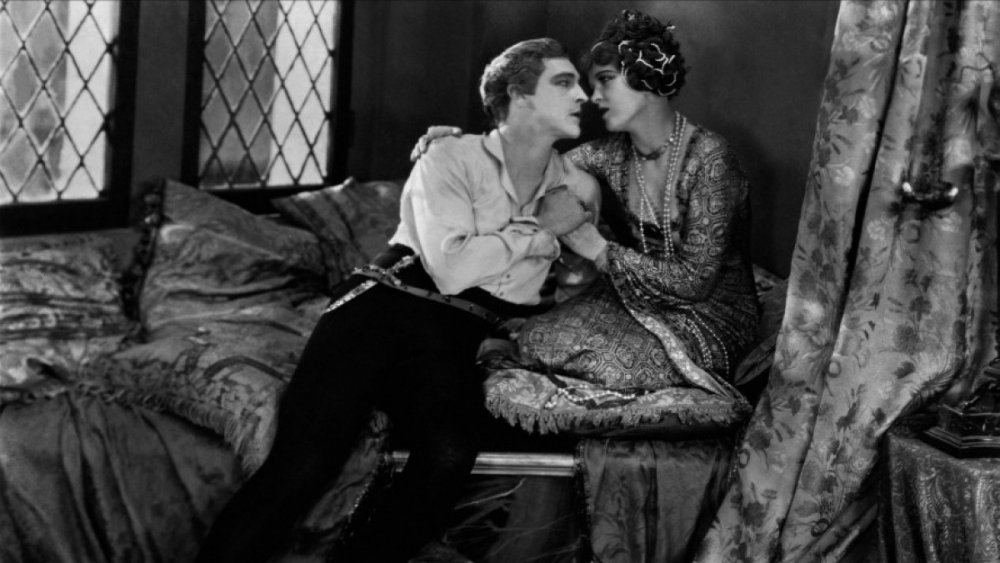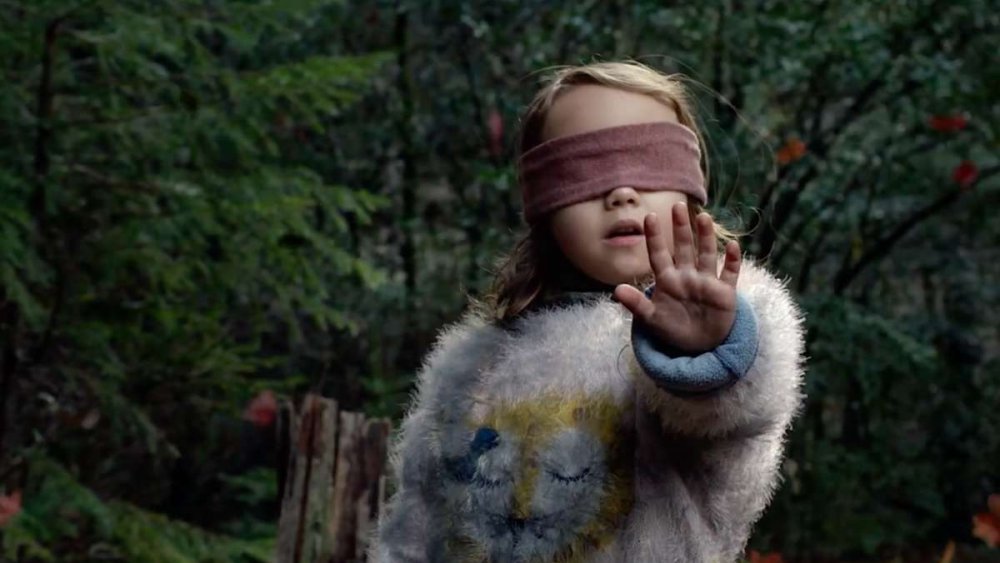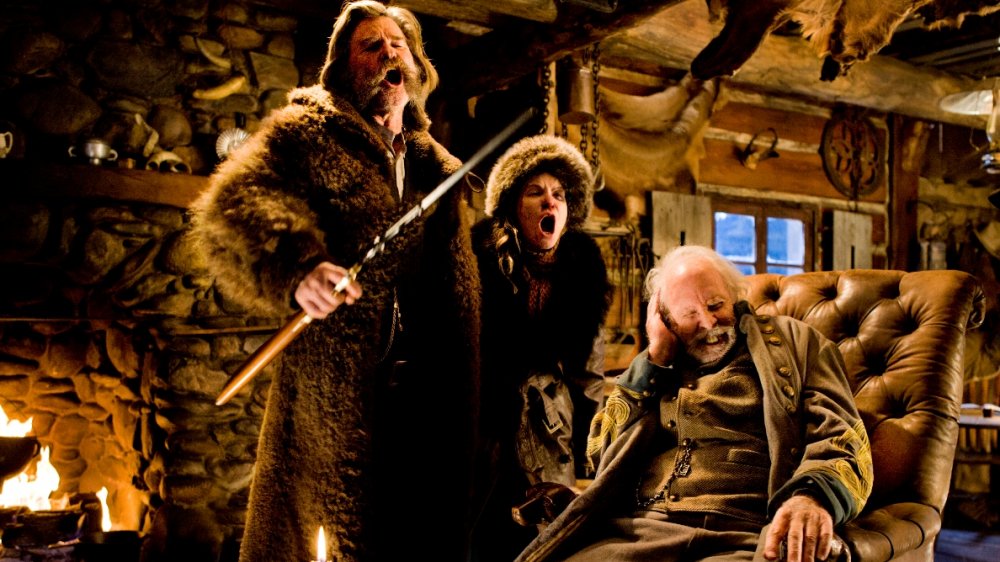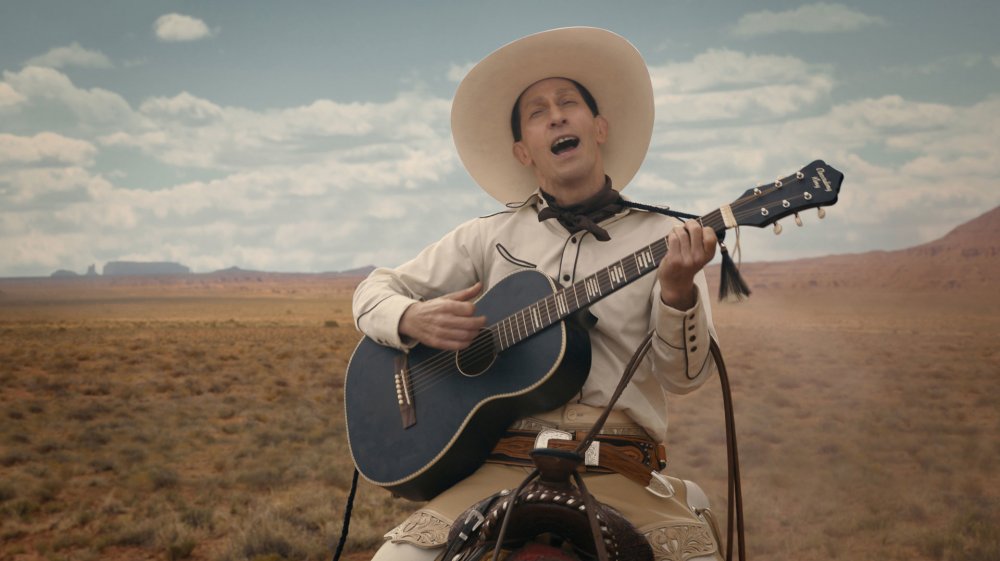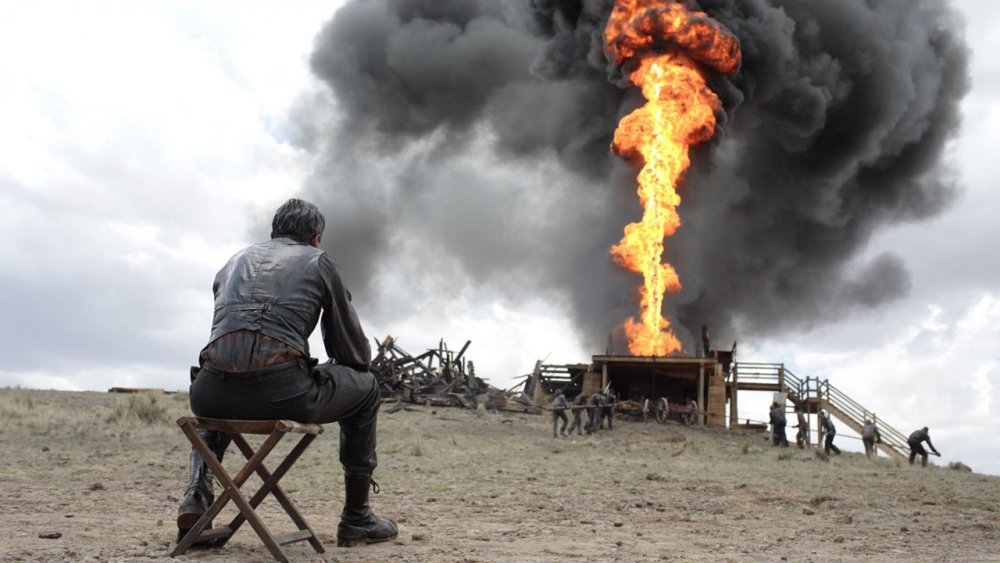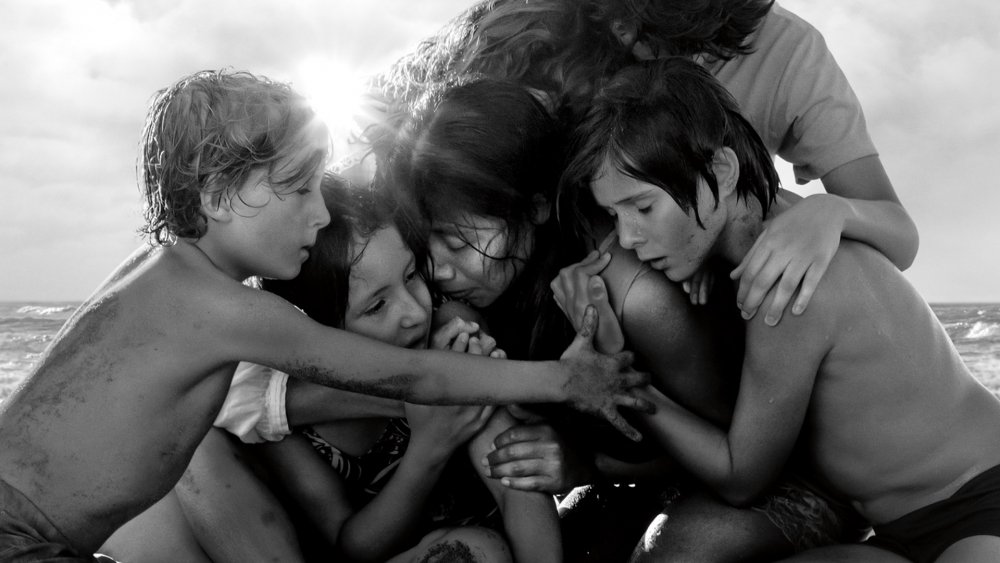Movie Sound Design Explained
This content was paid for by Netflix and created by Looper.
You don't just watch movies. You listen to them, too. What would the movies be like without the crack of Indy's whip, the "thwip" of Spider-Man's web-shooters, or the crackling screech of Doc Brown's DeLorean? They just wouldn't be the same, would they? Sound design is a thankless job — the better it is, the less you notice it — but it's just as important to the final film as the writing, the directing, the cinematography, and the editing.
Sound design is about more than just sound effects, too. What would a Tarantino movie be like if you couldn't understand the dialogue? Would The Good, The Bad, and the Ugly be such a classic if you couldn't hear Enrico Morricone's iconic score? Sound designers are responsible for making sure that a movie's soundtrack — which doesn't refer to just the music, but instead everything you hear in the film — tells the story just as clearly as its visuals. Here's how they do it.
What is sound design?
Sound design has been an indispensable part of the filmmaking process since 1926, when Warner Bros. released Don Juan, the very first feature-length movie with synchronized sound. Back then, the sound was recorded on records, not on the film itself, and was played back using a special system that linked a turntable to the projector and kept the image and the sound in sync. While Don Juan is technically the first film to feature sound, it only had music and sound effects — sound in film as a whole became more important a year later with the release of The Jazz Singer, which also had synchronized dialogue. It's been an integral part of the moviegoing experience ever since.
As you can imagine, putting together a soundtrack for a feature film is a lot of work. Most modern blockbusters have dozens of people on the sound team, and many of them specialize in just one small part of the process. That's why the Oscars split sound design into two separate categories. Basically, the Academy Award for Sound Editing honors the people who create the sound effects, while the one for Sound Mixing is for the folks who put it all together. Even then, the awards only go to the supervisors, who are the ones most likely to be credited as "sound designers," but don't be fooled. Sound design is a team effort.
Creating sound effects
But what do sound designers actually do? Well, for one, they create and sequence almost all of the sound effects you hear on a movie's soundtrack. Many of these noises are taken from sound effect libraries, which is why you sometimes hear the same stock sound effect in multiple movies. Listen to the thunderclap that rings out when lightning hits the Hill Valley clock tower in Back to the Future. Sound familiar? It should. That sound effect originated in Universal's original Frankenstein and has been used in everything from Ghostbusters to Scooby-Doo.
Sometimes, though, sound editors need something new. For example, for The Irishman director Martin Scorsese felt it was very important that each one of the cars featured in the movie, a period piece that spans multiple decades, sounded like their real-world counterparts. Editor and mixer Eugene Gearty, who won an Oscar for his work on Scorsese's Hugo, spent a day out in a field by John F. Kennedy International Airport, capturing engine sounds from nine different period-appropriate cars to use in the final film.
It's not always that easy. Genre movies often feature fantastic sights and sounds, forcing sound editors to think outside the box. The giant boulder that Indiana Jones outruns in the opening sequence of Raiders of the Lost Ark is actually a Honda Civic rolling down a rocky hill. For the crunchy, grinding sound that Terminator: Salvation's villainous machines make when they move, supervising sound editor Cameron Frankley fed pieces of metal through a log splitter and recorded the results. For the horror movie Bird Box, Glenn Freemantle and Ben Barker wanted to make sure the creatures could be identified by sound alone. To do so, they began by recording people whispering, then layered bee sounds on top, creating an otherworldly sound that neither the characters nor the audience are likely to forget.
All about Foley
Then there's foley, a discipline that dates back to the old radio drama days, and which differs from traditional sound effect creation in a couple of ways. For one, while other sound editors rely on libraries, foley artists create each sound specifically for the scene they're working on. For another, they aren't usually stuck behind a control board. Foley artists create sound effects in real time.
You know that scene in Monty Python and the Holy Grail when Terry Gilliam uses props to mimic the sound of Arthur's horse? Foley is basically the same thing. As movie footage plays on a projected screen, foley artists do their best to match sounds with what's happening in the film. They'll stomp on piles of twigs, squares of gravel, and marble slabs to create footsteps. They'll bang on metal sheets to spruce up car crashes. Wooden doors double for the creaking of a boat, and yes, halved-out coconuts really do make great horse noises.
Quentin Tarantino's The Hateful Eight is a great example of a film absolutely full of top-notch foley work. Allegedly, Tarantino hates re-recording dialogue in post-production, but getting actors' lines theater-ready removed all of The Hateful Eight's ambient noise, so sound editor Wylie Stateman had to spend over 200 hours re-creating the soundscape from scratch, putting every scrape, swish, and clang back into the film's soundtrack by hand.
Editing dialogue
Of course, none of this work means anything if you can't tell what's happening in the movie, which is why processing the dialogue is another one of the sound team's big responsibilities. That's not always as dry as it sounds. For the Coen brothers' western anthology The Ballad of Buster Scruggs, sound editor and re-recording mixer Skip Lievsay got to make Tim Blake Nelson's voice bounce off canyon walls, and imagined what it was like to hear him singing from inside a guitar.
It's not only the stars who rely on the sound design to give them their voices, either. On film sets, extras don't speak — it's more important to get a clear recording of the actors' dialogue than background noise. They just pantomime. As a result, any time there's a crowd, it's up to the sound crew to bring them to life.
Often, background chatter is recorded in the studio by a group of actors known as a "loop group." However, sound designers sometimes use other approaches. For The Curious Case of Benjamin Button, which is about a man who ages backwards, designer Ren Klyce sent a member of his staff to a southern retirement home with microphones attached to his sunglasses to clandestinely record the old folks' chatter. Those recordings ended up in the final movie, giving the fantastical story a much-needed sense of realism.
Three crucial letters: ADR
Sometimes, the dialogue recorded on set isn't usable, forcing the sound designers to re-record it during post-production. This process is known as Automated Dialogue Replacement, or ADR, although there's nothing automated about it. When recording ADR, actors watch the movie on a screen and attempt to replicate their original vocal performances as best they can while trying to make the lip syncing match up.
There are all kinds of reasons why you might need to do this. On James Bond films, the action scenes are loud enough that capturing dialogue on set is impossible. Britt Ekland, the actress who played Willow in Robin Hardy's The Wicker Man, was Swedish, but the movie is set in a rural Scottish community. As a result, Ekland's voice was replaced via ADR twice. Scottish actress Annie Ross provided Willow's speaking voice, while Rachel Verney took over when Willow sang.
ADR is a tedious and challenging process, and most actors hate it — but there are notable exceptions. Meryl Streep is reportedly a big fan, while Marlon Brando, who was a notorious mumbler late in his life, relied on ADR to complete his performances.
Fixing it in the mix
Once all of the sound effects, dialogue, and music have been rounded up, it's time to combine them. This step is called "mixing," and it's very, very important. Without mixing, some sounds will be too loud. Others will be too quiet. The soundtrack will sound tinny or cluttered, there won't be any surround effects, and the dialogue will get lost in the shuffle.
On the other hand, a great mix can help tell the story in ways other tools can't. For Steven Spielberg's War Horse, seven-time Oscar winner Gary Rydstrom played up the natural sounds in the film's opening scenes, then slowly phased them out as the violence intensified. Later in the movie, in the scenes when the war horse ends up in a French farmhouse, Rydstrom cranked up the nature noises again, recalling the animal's more peaceful days.
On There Will Be Blood, mixer Michael Semanick used the soundtrack to help sell the movie's violence. Thanks to the aggressive sound mix, it really feels like oil is being ripped out of the ground, and when things go wrong you can feel it in your bones. During the oil rig explosion, the mix alternates between quiet and loud moments, keeping you on your toes and telling you everything you need to know about one character's tragic accident. During quieter scenes, the soundtrack preserves the gritty nuance of the actors' voices, really selling all the hardships they've been through.
Bringing it all together
When all these techniques are brought together, magic happens. Just look at Alfonso Cuaron's Roma. Without a traditional score, it's up to Roma's sound design to do all of the heavy lifting, emotionally speaking.
To say that it succeeds is an understatement. While this process lasts between two and five weeks on most films, sound editor Skip Lievsay says it took ten weeks to create Roma's final mix — and naturally, the sound team used all kinds of tricks. To capture Mexico City's soundscape, Lievsay's colleague went out on Christmas Day, when traffic was minimal, to capture the city's natural noises. A hailstorm was created by cutting up glue sticks and tossing around the pieces. While Dolby Atmos surround sound is usually reserved for big-budget blockbusters, Cuaron and Lievsay found that the advanced technology was perfect for creating immersive, intimate moments.
It all adds up beautifully. When Roma's lead character, Cleo, runs from the house where she lives, through city streets, and to a nearby theater, the city comes alive with the sounds pouring from local storefronts, steadily growing crowds, and increasing amounts of traffic. You'll hear a noisy protest turn violent well before you see it, making the eventual reveal even more dreadful. When Cleo, who can't swim, wades into the ocean, the sound of waves crashing around her builds and builds. It's harrowing and terrifying.
Through sound, Roma both builds an entire world and offers unique insights into its protagonists' experiences. It's haunting and beautiful, and one of the best arguments for the importance of sound design you'll ever see — or, in this case, hear.
